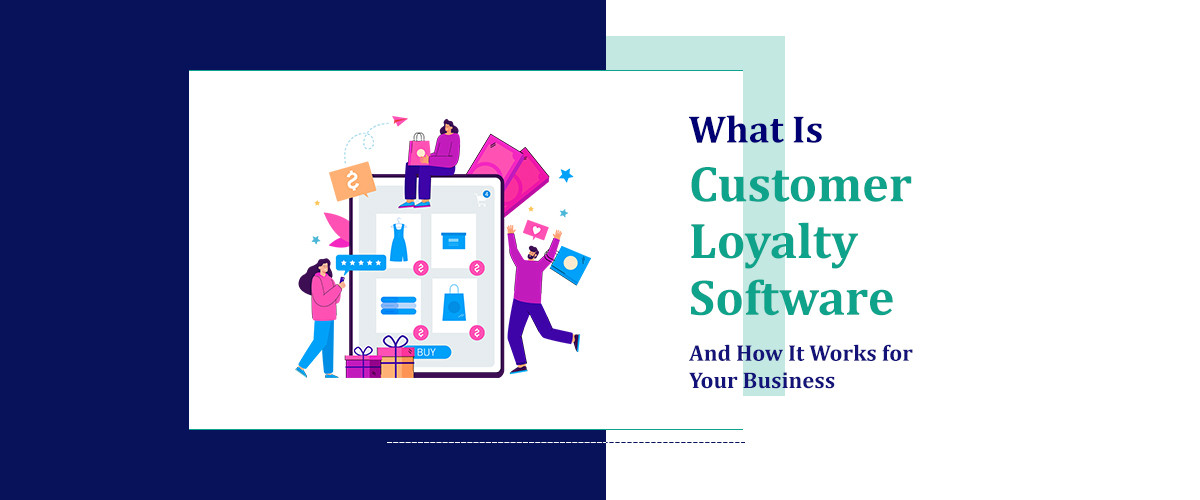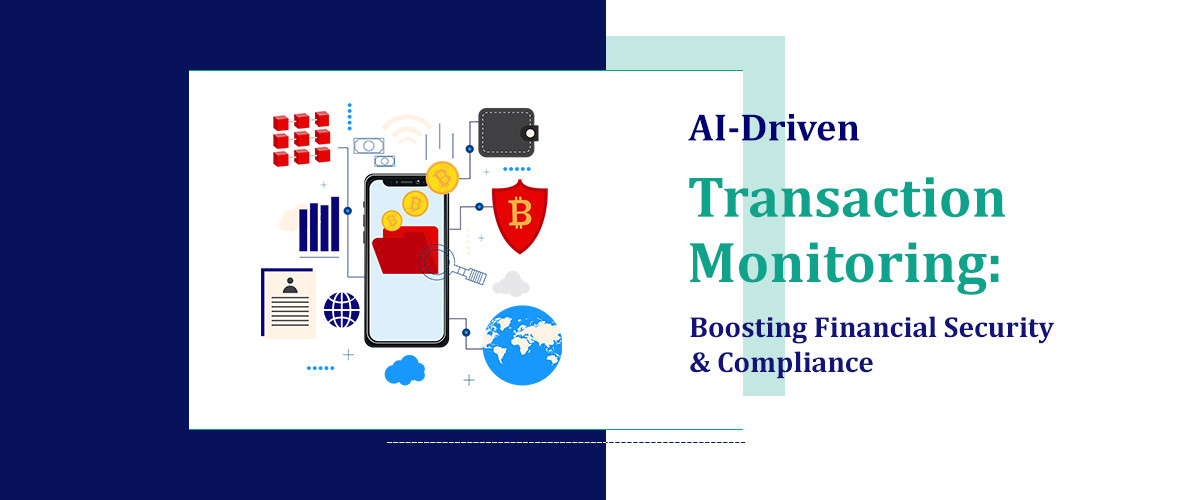What we'll cover
A company or brand may track and reward its customers' buying patterns and interactions with them by using customer loyalty software, a state-of-the-art technological tool. Businesses can rapidly create and manage loyalty programmes with this software, giving their customers better-personalised experiences. This programme provides valuable insights into user preferences and purchasing patterns while also streamlining the customer point accrual and incentive redemption procedures. Companies that employ the data may see improvements in customer satisfaction, more successful marketing targeting, and eventually, the development of loyal consumers who are ready to make repeat purchases.
What is Customer Loyalty Software?
In the United States, digital systems intended to support and administer customer loyalty programmes are called customer loyalty software. In exchange for their consistent business, these programmes reward their users with discounts, rewards, and other incentives. Companies may use this software to track consumer behaviour, offer customer rewards, and analyse data to improve marketing automation software. Businesses want to provide the greatest experience to their clients to reward loyalty, grow and maintain their audience, and boost sales.
Using customer loyalty software has the benefit of tracking and assessing client data. Important insights into the trends, tastes, and behaviour of the customer base may be gained from this data. Businesses may better target their marketing efforts and create campaigns that are relevant to their target demographic by utilising this data.
Why Do You Need Customer Loyalty Software?
Businesses should invest in customer loyalty software if they want to build brand loyalty and keep consumers. In today's cutthroat business environment, maintaining existing clientele is significantly more crucial than gaining new ones. Businesses may track and reward their most loyal consumers, keep an eye on their purchasing patterns, and customer feedback software and communications to suit their preferences by employing this tactic. Establishing long-lasting connections with their clientele may be facilitated by firms customising services and expressing thanks for their patronage. In turn, revenue increases as a result of client retention.
The main goal of customer loyalty software is to reward loyal customers. Numerous strategies, like point-based programmes, special awards, and member-only discounts, can be used to achieve this. By implementing a rewards programme, businesses may encourage consumers to keep making purchases and foster a sense of value and gratitude for their loyalty.
This software may be used by businesses to monitor, assess, and reward consumer behaviour. Companies that are aware of the buying habits of their clients may customise offers and messaging to meet the requirements and preferences of each unique client. As a result, customers are more likely to make additional purchases and have a personalised experience that makes them feel important and appreciated.
How Does Customer Loyalty Program Software Work?
In order to award loyal customers with benefits, customer loyalty software monitors and evaluates consumer behaviour and purchases. Basically, all it does is automate the process of giving consumers points, deals, or other benefits every time they interact with the brand or make a purchase. This programme frequently interfaces with the business's point-of-sale (POS) system to easily gather purchase information. Through an intuitive interface that facilitates the construction of promotional programmes and the extraction of insights from vast quantities of data on consumer spending and interaction patterns, businesses can manage memberships and users can check their rewards.
Software for customer loyalty programmes is a strategy that organisations are using more and more to increase client retention and happiness. Businesses may encourage customers to keep making purchases and interacting with their brand by providing incentives and rewards. This not only increases sales but also strengthens the bond and sense of loyalty that customers have with the brand and even helps with the reputation management of the brand.
The Importance Of Customer Loyalty Software
Customer loyalty software is crucial for sustaining business growth and building long-lasting client relationships in the United States. By leveraging data-driven insights, these technologies enable businesses to reward devoted customers, customise marketing efforts, and increase retention rates. These solutions give businesses a competitive edge in a market where customer expectations are always shifting by providing a deep understanding of consumer behaviour and preferences. Because of this, companies are able to better tailor their products and services to the particular needs of their target market, increasing customer satisfaction and loyalty.
Customer loyalty software benefits businesses while also providing customers with a sense of value and recognition. These systems are able to detect brand loyalists and deliver them personalised incentives and rewards by tracking their prior purchases and brand participation. This fosters referrals and repeat business in addition to strengthening the relationship between the firm and its customers.
Furthermore, United customer advocacy software is continually changing to adapt to changing consumer tastes and market dynamics. Thanks to technology advancements, these platforms now include gamification, social network integration, and mobile applications for a seamless user experience. In addition to enhancing customer engagement, this provides businesses with insightful data on customer preferences.
How Does Customer Loyalty Software Work for Your Business?
Step 1: Integration with Existing Systems
The first step should be to integrate your loyalty programme with your existing e-commerce platform, CRM software US, or Point of Sale (POS). This makes tracking consumer interactions and data exchange easy.
Step 2: Designing a Custom Loyalty Program
Describe how your loyalty programme is organised. Select the methods of earning (e.g., points for every dollar spent) and the specific prizes (e.g., freebies, special services, discounts).
Step 3: Enrolling Customers
Urge your clients to register for your loyalty scheme. You may accomplish this in-person or online, usually by asking for their email address or having them download your company app.
Step 4: Engaging Your Audience
Maintain client engagement by using the marketing tools provided by the software. Based on their purchasing patterns and preferences as determined by the software's analytics module, send them tailored offers or promotions.
Step 5: Tracking and Analytics
Track the effectiveness of your loyalty programme. To optimise the efficacy of your programme, analyse client interaction data and make necessary adjustments.
Step 6: Refining Your Strategy
Make adjustments to your strategy in light of the analytics' findings. To keep people interested in and excited about your loyalty programme, segment your audience for targeted ads and consider adding additional rewards.
The Features Of Customer Loyalty Software
- Personalization capabilities: These enable companies to customize incentives and experiences to each customer's unique tastes, increasing client happiness and loyalty.
-
Rewards & Incentives Programmes: Helps with the development and administration of reward schemes that promote customer recommendations and repeat business.
-
Support for several channels: Facilitates participation and access to loyalty programs program platforms, such as online, mobile, and in-store interactions.
-
Customer segmentation: Provides methods for dividing up consumers into groups according to their spending, loyalty, and behavior. This enables the use of focused marketing tactics.
-
Options for Integration: May easily link with current marketing, sales, and CRM software to build a single customer database.
-
Security features: guarantee that client data is kept safe, upholding confidence and adhering to data protection laws.
-
Scalability: The capacity to expand with a company and accommodate more complicated loyalty programs and a greater number of clients.
-
Tools for Reporting and Data Analytics: enables data-driven decision-making by offering insights into consumer behavior, purchasing trends, and loyalty program efficacy.
The Benefits of Customer Loyalty Software for Small Businesses and Retailers
A variety of advantages are offered by customer loyalty software to small enterprises and merchants with the goal of building a devoted clientele and increasing revenue. Here are a few main benefits:
-
Improved Customer Retention: Companies may greatly raise customer retention rates by rewarding loyal customers through loyalty programmes. This is frequently less expensive than finding new clients.
-
Increased Sales: By providing incentives for customers to come back, loyalty programmes stimulate extra purchases and can result in a boost in overall sales.
-
Important Data Collection: By gathering important information about consumer preferences and purchasing patterns, these platforms may help marketers develop more focused and successful campaigns.
-
Enhanced Customer contentment: Giving out prizes and rewarding devoted patrons makes their purchasing experience better, which raises customer contentment.
-
Competitive Advantage: By differentiating a company from rivals through the implementation of a loyalty programme, you may draw in more clients and persuade them to pick your brand over others.
-
Savings: Businesses may reduce marketing and acquisition expenses by concentrating on keeping their current clientele, which makes loyalty programmes an economical approach to increase sales.
Customer Loyalty Software: Our Evaluation Parameters
- User Experience (UX): Key elements for engagement are smooth interaction, intuitive design, and easy navigation.
- Integration Capabilities: The program's smooth integration with current systems (CRM, POS, etc.).
- Customisation Options: Adaptability to changes in client demands and brand identity in terms of features, incentives, and messaging.
- Help and Instruction: Accessible for both technical and non-technical users, competent assistance and extensive training resources are available.
- Scalability: The ability to expand and change to accommodate shifting clientele and company sizes.
- Security and Compliance: Making sure the programme complies with international privacy laws and that client data is safeguarded.
- Reporting and Data Analysis: Instruments that offer insightful data on ROI, loyalty patterns, and consumer behavior.
- Economy of Cost: An examination of feature, benefit, and long-term value pricing structures.
Conclusion
On platforms like SaaS Adviser in the USA, customer loyalty software is a crucial tool for companies trying to build a solid relationship with their clients. These technologies help businesses increase customer happiness and loyalty by allowing them to offer tailored marketing campaigns, collect meaningful feedback, and reward loyal consumers. Increased sales, a more engaged client base, and a clear competitive advantage in the market are the outcomes. Businesses can turn their customer engagement strategy into a smooth and satisfying experience that entices consumers to come back time and time again by using the correct customer loyalty software.
Customer loyalty software helps businesses increase customer retention, boost engagement, gather valuable customer insights, drive revenue growth, and gain a competitive edge in the market.
By offering rewards, discounts, and personalized incentives, customer loyalty software encourages repeat purchases and fosters a sense of loyalty and commitment among customers.
Data analytics tools integrated into customer loyalty software help businesses analyze customer behavior, preferences, and purchasing patterns to tailor rewards and marketing strategies effectively.
Through targeted communication, personalized offers, and interactive features, customer loyalty software actively engages customers, encouraging them to interact with the brand more frequently and deepen their connection.
Absolutely! Customer loyalty software is scalable and adaptable to businesses of all sizes. Small businesses can leverage loyalty programs to build strong relationships with customers, increase sales, and compete effectively in the market.


.jpg)
.jpg)
